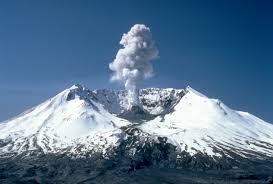The Lasting Impact of Mount St. Helens Eruption

Introduction
Mount St. Helens, an active stratovolcano located in Washington State, is renowned for its catastrophic eruption on May 18, 1980. This eruption, the most significant in American history, dramatically reshaped both the landscape and the scientific understanding of volcanic activity. With ongoing research and monitoring, the volcano’s influence remains relevant, highlighting the importance of geological awareness and disaster preparedness.
The 1980 Eruption
The eruption of Mount St. Helens was preceded by a two-month series of earthquakes and steam-venting episodes. At 8:32 AM on May 18, 1980, a magnitude 5.1 earthquake triggered a massive landslide, followed by a lateral blast that devastated an area of approximately 230 square miles. The eruption released about 1.2 cubic kilometers of ash into the atmosphere, resulting in ashfall across several states. The event led to the tragic loss of 57 lives and significant economic losses estimated at over $1 billion.
Post-Eruption Recovery and Research
Following the eruption, scientists launched extensive studies to better understand volcanic behavior and ecosystem recovery. The landscape around Mount St. Helens served as a natural laboratory, allowing researchers to observe regrowth and ecological succession in areas that were once barren. Over the decades, the region has undergone remarkable transformation, with wildlife returning and plant communities reestablishing.
Current Monitoring and Future Concerns
Today, Mount St. Helens remains an active volcano, and the United States Geological Survey (USGS) conducts continuous monitoring for signs of activity. In recent years, there have been small dome-building eruptions, indicating that magma is still present beneath the surface. Local authorities and scientists emphasize the importance of public awareness about volcanic hazards, especially given that the volcano is situated near populated areas.
Conclusion
The legacy of Mount St. Helens is a powerful reminder of the dynamic nature of our planet. It serves not only as a significant geological feature but also as a symbol of resilience and recovery in nature. Moving forward, continued research and monitoring will be crucial in understanding the volcano’s behavior and mitigating potential risks, ensuring that both the environment and local communities remain prepared for any future activity.




